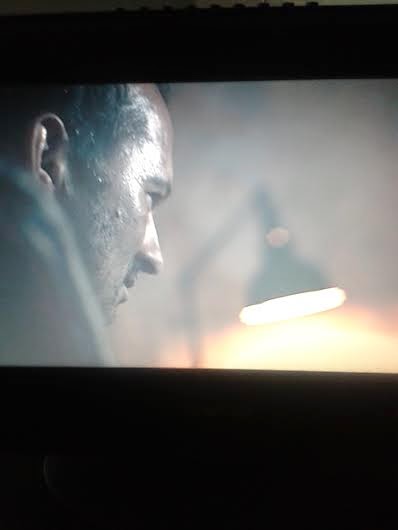Macbeth – PBS 2009
Rupert Goold’s 2009 film of “the Scottish play”, based on
his triumphant stage production, is mighty fine. Original, witty at times, more earthily human
than most interpretations, its avant garde mood gives the familiar material a
fresh and new tone. At times it also clashes
absurdly with the text of the masterpiece, but we can overlook that as minor in
the main.
The film opens not with the three witches as is the universal norm but,
rather, with the hand of a wounded soldier being wheeled around on a gurney in
a kind of weird subterranean hallway that seems to be part of a hospital. This introduces a
visual motif that Goold employs throughout, which is that of a hallway or
passageway.
The film uses actually war footage and,
later, actual footage of mindless crowds in Communist nations cheering the
dictator. This interpolation of stock war footage is a worn out device, ancient
really, but was probably done here due to budgetary limits. Compare the use of such in a film like Clint
Eastwood’s HEARTBREAK RIDGE.
“What bloody man is that?” Goold’s version inserts the three witches
into the principal action of the story, a totally new innovation as far as I’m
aware. Here they turn up as nurses
attending to the “bloody man” of Duncan
The witches.
“…in thunder, lighting, or in rrrrrrrrrrrain?” This witch is overly angry.
This is one place where the ultra mod setting
shrieks a little bit against the text – “Upon the heath…” but they don’t meet
Macbeth and Banquo on the heath – they meet with him in a conference
room/banquet hall.
Macbeth and Banquo emerge from battle.
The execution of Cawdor. I suspect this might baffle anyone not
familiar with the play. Compare with the
execution of Cawdor in Polanski’s film.
Kate Fleetwood, very strong in the role. “Hold! Hold!”
Here Paul Shelley as Duncan and Fleetwood
shine with nuance. Brilliant.
“We will proceed no further in this business.” Patrick Stewart puts a new and unique
explication on the role.
The Porter, played by Christopher Patrick Nolan,
is given a weighty role in this film above and beyond the original Shakespeare,
as the witches are. Here is an example
of Goold’s visual ‘tunnel’ motif alluded to earlier.
Faucets that appear and reappear throughout –
an important visual anchor.
“Is this a dagger which I see before me?”
Face to face.
The couple is shot various ways throughout the film. One of the most important is the through the
bars of a mysterious elevator we keep seeing throughout. Shots through bars are another favorite prehistoric
device of many directors.
Two examples – she is shot in sharp focus up
front; he, in blur in the background.
Another of Goold’s original touches – The Porter
interacts with the Macduff family. This
makes it easier for the novice to easily catch on to who they are much later in
the play.
The Porter watches crowds on TV.
Banquo addresses the large image of Macbeth: “I
fear thou played’st most foully for ‘t.”
King!
Banquo and Fleance. The framing motif again.
The ghost of Banquo.
“Have you considered of my speeches?” Macbeth prepares a sandwich while he plots
the death of Banquo and Fleance with The Murderers.
Ross is differentiated from the others by
means of the suit he wears – why?
The Witches more in depth prophecies late in
the drama.
“Beware the Thane of Fife .”
Goold’s staging of the murders of the Macduff
family members is brilliant and scary.
Scott Handy as Malcolm – an actor with an unusually
expressive face.
Macduff framed as Banquo and The Porter were
earlier.
Blood, blood, and more blood – in the
climactic scene Macbeth and Macduff fight not with swords but knives, which
means that Macduff would have to sever Macbeth’s head from his body with a
knife. No wonder Goold chooses not to show
this.


































No comments:
Post a Comment